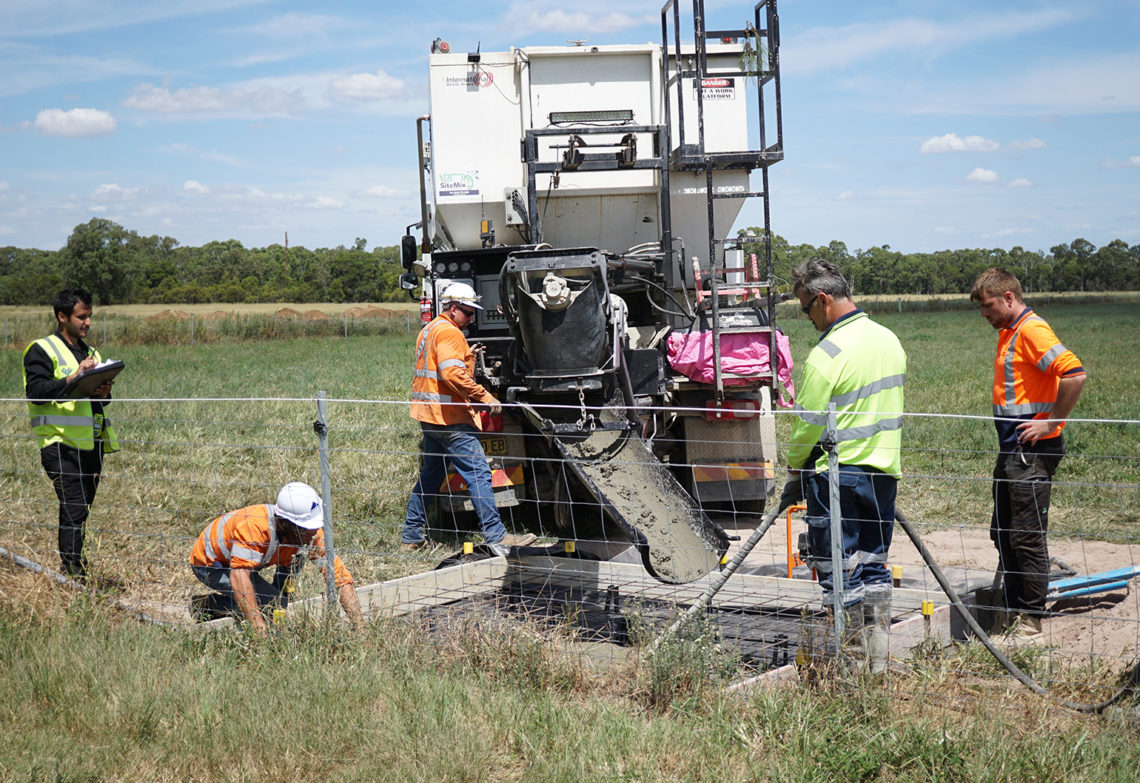A new company is commercialising its ideas for how to use recycled concrete and carbon dioxide in construction.
Vivian Tam earned her PhD from City University of Hong Kong in 2005 when she invented a two-stage mixing approach for recycled concrete.
She then moved to Australia to join Griffith University, and has been at Western Sydney University (WSU) since 2009.
There, she is Associate Dean (International) and Professor in Construction Management, specialising in topics including sustainable construction, green building and life-cycle assessment.
The past few years have seen her return to recycled concrete for work that has earned her a runner-up place at the prestigious Scopus Researcher of the Year Awards for Excellence in Creating a Sustainable Future.
This work has also been spun out into a company, Ecobond, which launched in January 2018.
“I put a hold on all publications because, in March 2017, this particular project also got selected by Innoyvz’s Waste and Recycling Technologies Program,” Tam told create of publishing developments on what she calls CO2 Concrete.
“And that’s why I held up all the publications — because we want to commercialise the product.”

Work on the method to create recycled concrete started sometime around 2015. A recent paper explains the process: it puts recycled aggregate in a pressurised chamber and injects carbon dioxide.
The carbon conditioning turns calcium hydroxide into calcium carbonate with small crystals. These increase the density and strength of the material and decrease water absorption — each of which has limited the use of recycled aggregates for structural concrete.
Many other researchers are developing processes to cure concrete with carbon dioxide, but this method uses recycled concrete, and, according to Tam, offers a cost saving over virgin concrete.
Importantly, she said, the process is also quick enough to industrialise.
“I cannot tell you some of the confidential details regarding the carbonation process, but I can say that my process is much, much faster and much more economical compared to what is available in the market,” Tam said.
“I can give you examples from publications in other countries where a batch could be carbonated for 24 days.”
Throughput increases with chamber size. The most recent iteration is 1.2 m in diameter by 1.6 m, and the first prototype was 50 cm by 50 cm by 35 cm.
There was a lot of experimental work to begin with, said Tam, with trial and error on mixing practices. Following that, machine-learning experts made sense of the results.
Models have been developed where industrial strength requirements and other constraints can be used as inputs, and a mix of a certain proportion of recycled and virgin aggregate can be recommended.
Conversely, the proportion of recycled versus virgin aggregate can be input, and the resulting strength and other properties are the outputs.
Reducing the impact of concrete
Cement is an irreplaceable man-made substance, though one with a large carbon footprint.

Its production contributes an estimated five per cent of all greenhouse gases, both from creating the heat required in a kiln and through the carbon dioxide that escapes when limestone is broken down by heat with other materials.
Possibilities for mitigating emissions include substituting cement for geopolymer, introducing methods of carbon capture and storage or usage, and injecting carbon dioxide back into cement.
According to Tam’s figures, at the current levels of concrete production in Australia, CO2 Concrete could provide a net lifecycle benefit of $16 billion — versus a loss of $22 billion for using virgin concrete — and save 2.68 billion kg of carbon dioxide emissions.
The work of Ecobond — which Tam founded with fellow CO2 Concrete inventor and WSU academic, Associate Professor Khoa N. Le — is awaiting a patent. This is one of several important steps ahead in 2020, she believes.
“It will be important for me to really pursue getting these products into the commercial scale,” Tam added.
“Having someone using it [and] partnering with concrete suppliers or contractors or other agencies with the network to use concrete as well, because I really want this concrete to be used in Australia. And hopefully it can go further.”
This article originally appeared as “Carbon enriched concrete” in the April 2020 edition of create magazine.




Carbon is not a problem in the world .
This is a myth spread by Alarmists.
Recycled concrete as detailed the the article above is as expensive as hell and has poor quality control.
More carbon is used than what is saved.
The only result is to us more uncompetitive.
Your first sentence was sufficient comment. Fortunately, many clear thinking technological leaders recognize the potential life cycle benefits, economic and environmental, of researching and developing a smaller carbon footprint in this global industry. The author is to be commended for the apparent innovative approach to increasing the input of recycled concrete into the curing process which further enhances the carbon uptake and substitution.